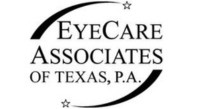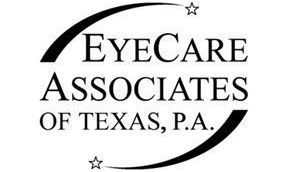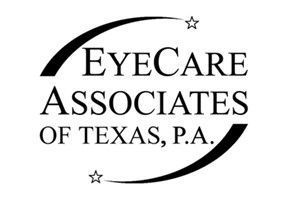EYECARE ASSOCIATES OF TEXAS, P.A.
CORNEAL CROSS-LINKING
What is a CORNEAL CROSS-LINKING?
Dr. Gowri Pachigolla is proud to announce the Avedro KXL system is now available at EyeCare Associates of Texas. This FDA approved device will help to effectively treat progressive keratoconus and corneal ectasia in the office using a method called Collagen Corneal Cross-Linking.
Collagen Corneal Cross-linking (CXL) is a minimally invasive, FDA approved, outpatient procedure that combines the use of prescription eye drops, Photrexa® Viscous (riboflavin 5’-phosphate in 20% dextran ophthalmic solution), Photrexa® (riboflavin 5’-phosphate ophthalmic solution), and ultra-violet A (UVA) light from the KXL® system for the treatment of progressive keratoconus and corneal ectasia after refractive surgery.
DOES CORNEAL CROSS-LINKING REQUIRE REMOVAL OF THE EPITHELIUM?
Yes, your doctor will apply topical anesthesia to numb the eye prior to the removal of the Epithelium. This process helps to prepare your eye so that the drug can penetrate the tissue of the cornea to have an effective cross-linking procedure. Photrexa Viscous eye drops will be applied to the cornea for at least 30 minutes.
AM I AWAKE DURING THE PROCEDURE?
Yes, typically you will be awake during the treatment. You will be administered numbing anesthetic drops for your comfort while you are in the office.
HOW LONG DOES THE TREATMENT TAKE?
The actual procedure takes about an hour, but you will be in the office for approximately two hours to allow sufficient time for preparation and recovery before you return to the comfort of your own home.
DOES IT HURT?
There is some discomfort during immediate recovery but usually not during the treatment. Immediately following treatment, a bandage contact lens is placed on the surface of the eye to protect the newly treated area. After the numbing drops wear off, there is some discomfort, often described as a gritty, burning sensation managed with Tylenol and artificial tears.
WHAT CAN I EXPECT AFTER THE PROCEDURE?
- You should not rub your eyes for the first five days after the procedure.
- You may notice a sensitivity to light and have a foreign body sensation. You may also experience discomfort in the treated eye and sunglasses may help with light sensitivity.
- If you experience severe pain in the eye or any sudden decrease in vision, you should contact your physician immediately.
- If the bandage contact lens from the day of treatment falls out or becomes dislodged, you should not replace it and contact your physician immediately.
WILL I NEED TO BE OUT OF MY CONTACT LENSES FOR THIS PROCESS?
Yes. Typically, patients are asked by their doctor to stop wearing hard contact lenses prior to surgery for a period of several weeks. Once treated, patients will not be allowed back into contact lenses for a minimum of 1 month.
WHAT RESULTS CAN I EXPECT?
In clinical trials, progressive keratoconus patients had an average Kmax2 reduction of up to 1.4 diopters in Study 1 and 1.7 diopters in Study 2 (which is flattening) at 12-months post-procedure, while the control group had an average increase of up to 0.6 diopters at 12-months (which is steepening). Individual results may vary. Many research studies have shown that CXL prevents further vision loss in over 95% of patients and improves vision in 60-81% of patients treated.
CAN ANYONE TELL BY MY APPEARANCE THAT I HAVE CROSS-LINKING?
No. There is no change in the appearance of your eyes following cross-linking.
IS CORNEAL CROSS-LINKING COVERED BY INSURANCE?
FDA approved cross-linking is widely covered by insurance.
For additional information on insurance coverage, and to view the latest list of insurers that are known to have policies that cover cross- linking, visit the Insurance Information page on LivingwithKeratoconus.com.
HOW LONG DOES CORNEAL CROSS-LINKING LAST? IS IT REPEATABLE?
Based on study results over more than a decade, the beneficial effects of corneal cross liking appear to last for many years and there is evidence that this strengthening effect may be permanent.
The vast majority of patients respond to a single treatment and do not need to have the procedure repeated. For the occasional patient in whom this treatment is not successful, cross-linking can often be repeated.
CEDAR HILL LOCATION
Business Hours:
Monday: 8:00 am - 5:00 pm
Tuesday: 8:00 am - 5:00 pm
Wednesday: 8:00 am - 4:00 pm
Thursday: 8:00 am - 5:00 pm
Friday: 8:00 am - 12:00 pm
Saturday: Closed
Sunday: Closed
GRAND PRAIRIE LOCATION
Business Hours:
Monday: 8:00 am - 5:00 pm
Tuesday: 8:00 am - 5:00 pm
Wednesday: 8:00 am - 1:00 pm
Thursday: 8:00 am - 5:00 pm
Friday: 8:00 am - 12:00 pm
Saturday: Closed
Sunday: Closed
CEDAR HILL LOCATION
Business Hours:
Monday: 8:00 am - 5:00 pm
Tuesday: 8:00 am - 5:00 pm
Wednesday: 8:00 am - 4:00 pm
Thursday: 8:00 am - 5:00 pm
Friday: 8:00 am - 12:00 pm
Saturday: Closed
Sunday: Closed
GRAND PRAIRIE LOCATION
Address
Phone:
(513) 901-4811
Fax:
(866) 353-7586
Business Hours:
Monday: 8:00 am - 5:00 pm
Tuesday: 8:00 am - 5:00 pm
Wednesday: 8:00 am - 1:00 pm
Thursday: 8:00 am - 5:00 pm
Friday: 8:00 am - 12:00 pm
Saturday: Closed
Sunday: Closed


